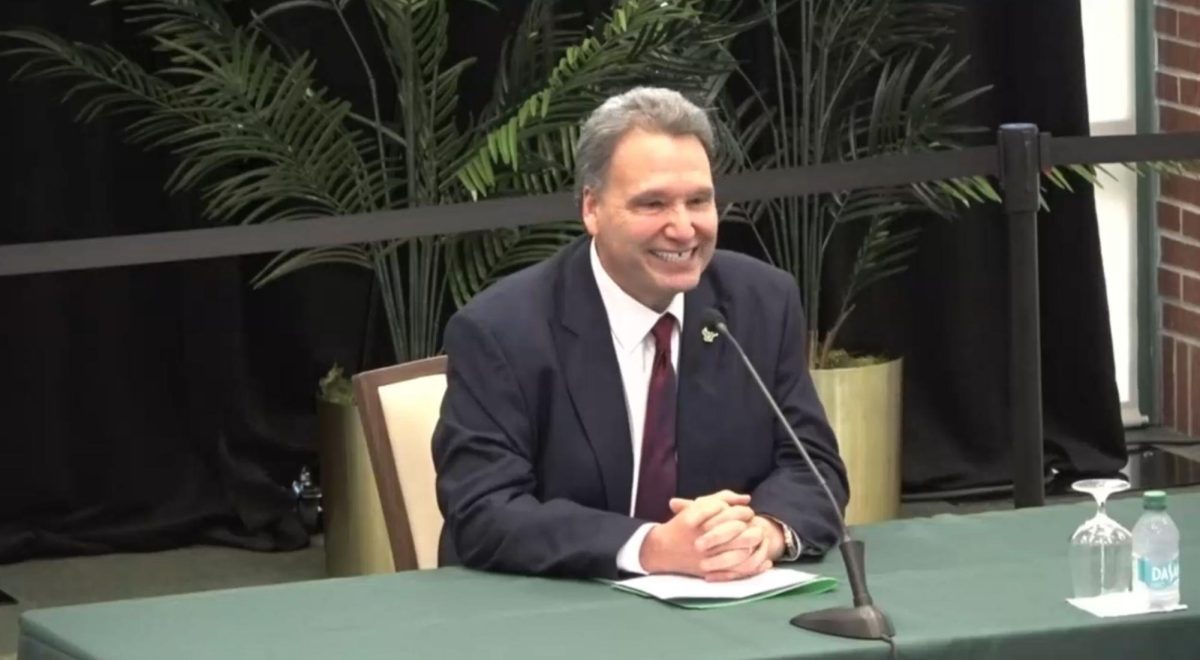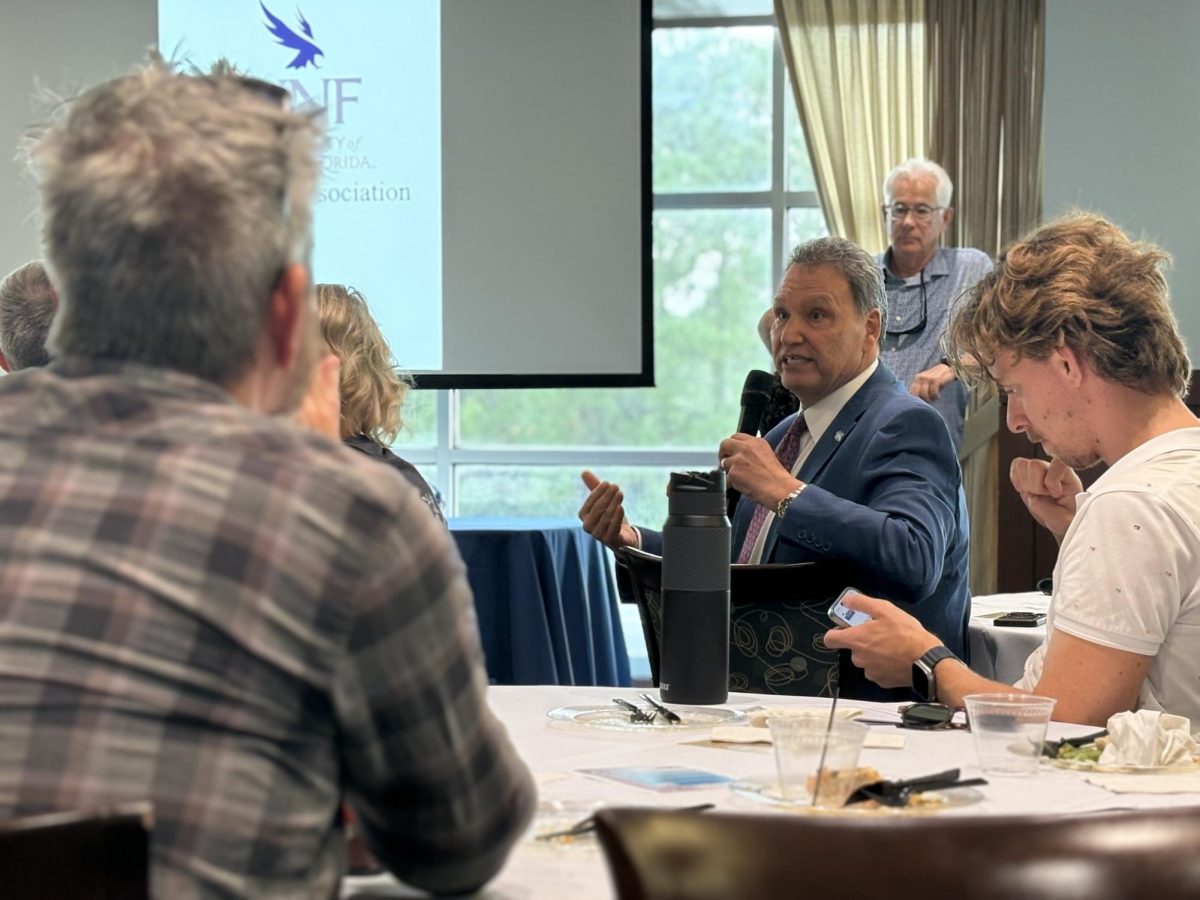
By: Joseph Basco, News Editor
The UNF Foundation, a nonprofit that handles funds donated to the university, will begin to make its endowment investments more transparent to the public, said UNF Vice President of Institutional Advancement Pierre Allaire.
Currently, the entity has a confidentiality agreement with its investment firm, Perella Weinberg Partners, which prevents it from disclosing which companies the foundation invests in.
According to endowmentethics.org, responsible investment allows institutions to ensure that their investments are aligned with their values. Institutions could potentially blindly invest in companies that destroy the environment, mistreat their workers, build private prisons or discriminate against employees.
Martin Bourqui, national organizer of the Responsible Endowments Coalition, said endowment transparency is the first step toward responsible investment.
“I think the question is less: ‘What are we invested in’ as [opposed to], ‘What are the types of things we are invested in and how could these investments be conducted in more socially and environmentally responsible ways.’”
The university first became aware of the issue when a group, comprised of UNF faculty and staff, sought to make the university more in line with its six core values.
The Values Integration Task Force was formed in 2010 to create objectives that would stimulate dialogue regarding the application of the six core values within the UNF community.
Dr. John Frank, coordinator of the UNF Institute for Values, Community and Leadership, was the chair of this task force. He said Dr. David Jaffee, a UNF sociology professor and member of the task force, was instrumental in bringing the endowment transparency issue to light.
“The issue came up – and I don’t want to minimize it in any fashion – but it was one of many, many observations that were made just to illustrate the big issue,” Frank said. “The big issue is, what is the university doing to assess its policies, its practices, its behaviors and way of being, to assure its actions are consistent with its values?”
The report, What We Say and What We Do: Jumpstarting the Conversation on Our Values, lists its 11th recommendation as “apply the values to management of the university’s endowment fund.”
Jaffee said he followed the issue at other universities for years. He said groups in other universities have brought the issue up and successfully convinced their respective schools to work toward endowment transparency.
“Normally, most universities don’t have transparency when it comes to the endowment funds,” Jaffee said. “They have a separate investment company that handles that, so it allows them to essentially make decisions about the funds which are not subject to the normal scrutiny of other kinds of decisions that will be made at the university.”
How the endowment fund works
Allaire said the foundation has two options on how donated funds are applied, depending on how the donor wants their money used. Donors can donate money directly toward colleges, departments, scholarships, faculty positions and other uses. The other option is to put the donated money into the endowment, which Allaire said is currently at $75 million.
“The endowment is where it’d be like you have a savings account,” Allaire said. “You put the money in this account, and you never spend it. You only spend investment earnings that you get from it each year.”
The foundation, comprised of a 50-member board, has a 12-member investment committee that oversees the management of the principle, or funds that are never spent, of the endowment. The committee creates guidelines on how it wants the money invested.
Allaire said the committee puts certain percentages of money into different “asset classes” such as stocks, bonds, private equity and cash. The percentages fluctuate based on the “strategy” the committee chooses.
The money is then given to an external investment firm that picks the investments. The firm puts the foundation’s money into different asset classes, and over time, profit accumulates over the initial investment — or principle.
The foundation switched from Morgan Creek Capital Management to Perella Weinberg Partners Jan. 1.
Even though the Foundation does not provide endowment fund reports to the public, Allaire said it provides annual reports to the private donors who contribute to the fund. As is, the foundation does not make its investments transparent.
In an email addressed to Jaffee and the Spinaker March 14, Allaire said the Foundation will begin creating guidelines or a policy whereby it can provide investment transparency. It will look at what other schools have done and what can be done based on the confidentiality agreement with the investment firm.
Allaire said it would take six to 12 months for the foundation to reach endowment fund transparency.
Jaffee said it is too preliminary to determine if the foundation is willing to produce any transparency regarding the direction of endowment investments toward companies and corporations but emphasized this issue can gain momentum through dialogue.
“It would be good if the larger community was interested in these issues,” Jaffee said, “because they strike at the heart of the integrity of the issue in terms to the extent to which ‘We put our money where our mouth is.’”
Email Joseph Basco at news@unfspinnaker.com.











